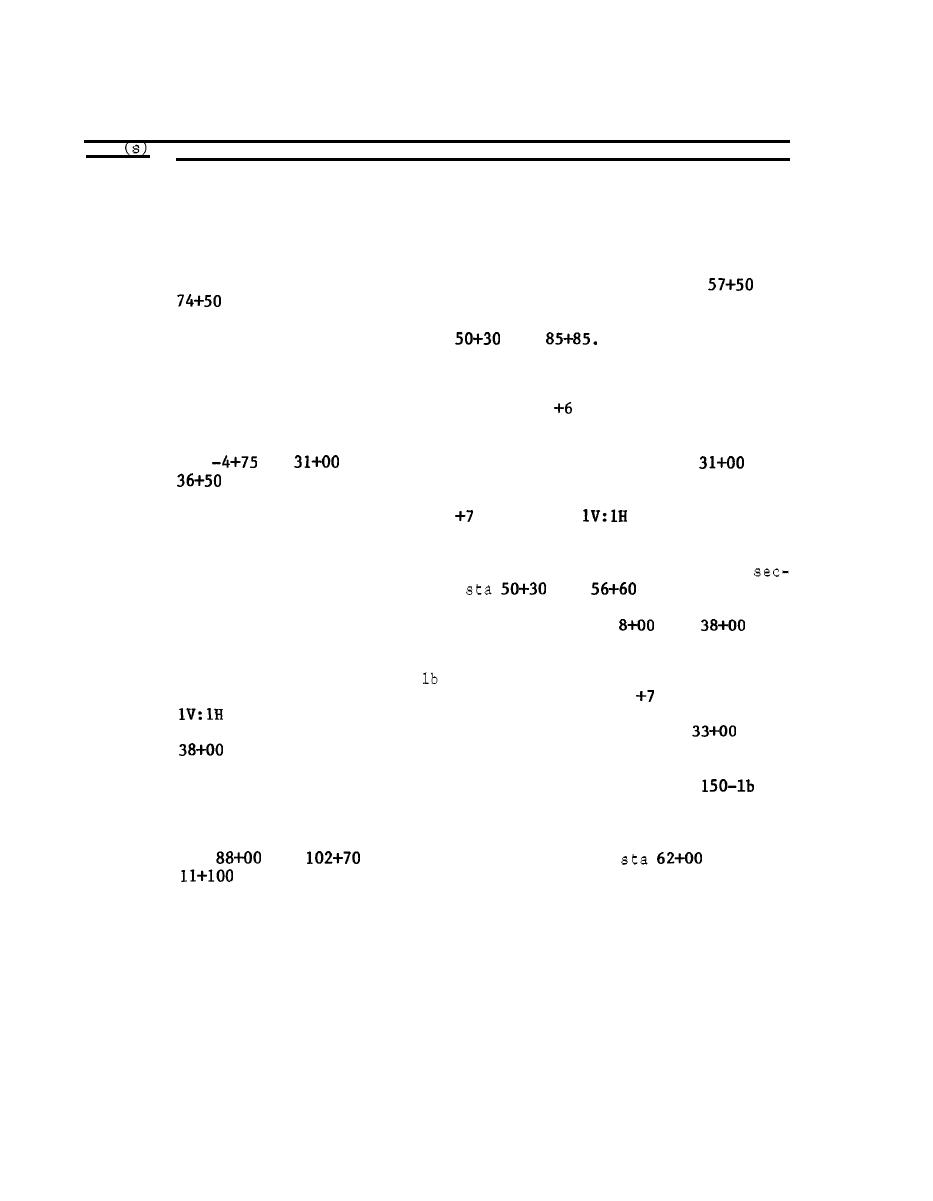
Table 14 (Continued)
Date
Construction and Rehabilitation History
1931-
49,500 and 51,200 tons of stone were placed on the north and south
jetties, respectively. The cost of the seaward repairs totaled
1932
(Cont)
6,000.
1934
Voids on the ocean side of the north jetty were filled with 25- to
100-lb of granite stone to arrest the flow of sand through the
structure, and 4,800 tons of stone were placed between sta
and
ranging in width from 2 to 8 ft was constructed along the centerline
and
The crown elevation
of the north jetty between sta
ranged between +11 and +13 ft mlw. A total of 3,780 cu yd of con-
Elevations on the north jetty varied form
to +14 ft mlw and on
1935
the south jetty varied from 0 to +14 ft mlw. Repairs were made to
the inner portion of the south jetty, filling void spaces from
to
using 200 to 2,000-lb stone. From sta
sta
to
the voids were filled between 0.0 and 4.0 ft mlw with smaller
stone (less than 200 l )
b . This section was repaired using a 4-ft-
crown width at an elevation of
ft mlw and
side slopes
The north jetty concrete cap was widened from the existing 2-ft
1938
tion to a width of 6 ft between
and
1940-
Repairs were made to the south jetty between sta
and
1941
placed on the inner 1,200 ft and outer 1,800 ft, respectively. Void
filling stone of 50 to 150
was placed throughout the repair sec-
tion. The design called for a 6-ft crown width at
ft mlw with
side slopes. Sand overlying the jetty was to be removed
and
before stone placement. Small stone was removed between
as required to allow placing of the cover stone to the design
section with the removed stone subsequently used to fill voids.
21,800 tons of 1- to 6-ton stone and 4,800 tons of 50- to
stone were placed at a cost 5,000.
Rehabilitation made to the seaward end of the south jetty between
1961
and
and the north jetty between
and
sta
(Figure 2 4 ) . Areas of deterioration from settlement and dis-
lodgement of stone had occurred at the ocean ends and along landward
portions of both jetties. Also, several portions of the north jetty
concrete cap had been broken and displaced from the crown along with
some of the underlying support stone. The major causes of settle-
ment seemed to be slope flattening and the possibility of wave
(Continued)
(Sheet 3 of 4)
47



 Previous Page
Previous Page
